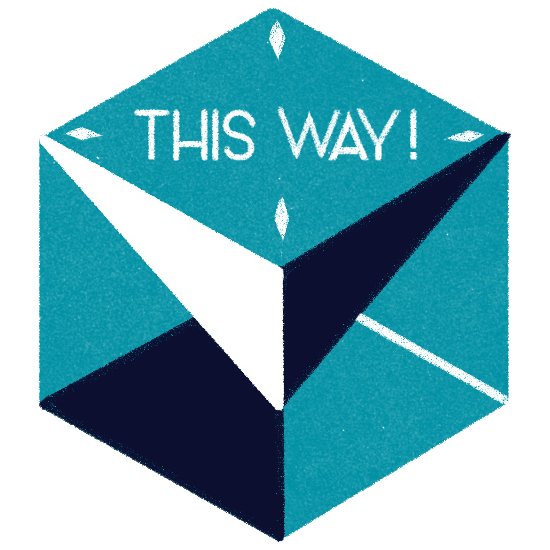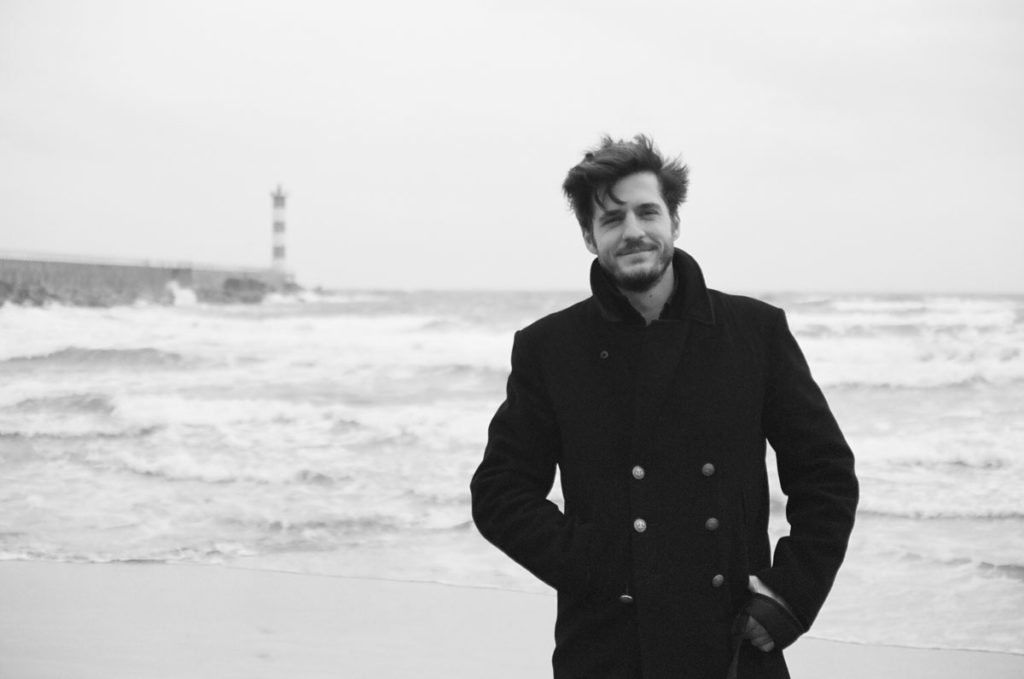
Hello again Explorers!
This is Anton from This Way, and we’re back again with another interview. This time, it’s our artist extraordinaire, Léonard Dupond — the man responsible for all that amazing artwork featured all over the Kickstarter campaign for I C E, as well as This Way’s Instagram page.
ANTON: So, Léonard — how are you doing today?
LÉONARD: Really fine, thank you!
ANTON: So I’d like to start this interview by going back to the very beginning. I guess you can say most people start drawing or doodling at an early age, whether it’s for school projects or whatever — but how old were you, when you started drawing… pretty-much non-stop?
LÉONARD: Ok, so I guess there’s kind of a myth of the artist that is obsessed with drawing, and he would say “Yeah, you know, I was 5, and drawing portraits and landscapes.” I guess that wasn’t my case. I was drawing like every kid, and not very well… actually. But then I got better and better, and I guess it was about 12 when my aunts offered me a book of John Howe, who is an illustrator. And he made some images for the Lord of the Rings. It was an art book, and suddenly I realized you could [make a living] with drawing. And it kind of helped me to get even more focused on drawing. So I guess it was about 12 when I really started to draw intensively, uh… really bad in my opinion. I guess like every kid.
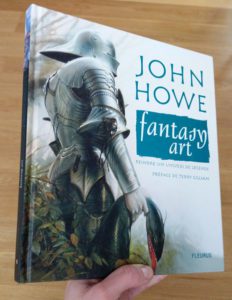
ANTON: [laughs] I can’t imagine that. And how old would you say you were when you decided you wanted to pursue drawing as a professional career?
LÉONARD: I had not much information about which real jobs you could do with drawing, so I had a very blurry idea of, like… is it even real work? Can you even make a living with drawing? I guess it was about 15-16 years old when I got really interested in concept art. So yeah, my first focus, my first objective was to become a concept artist, because it was basically one of the only real job that I knew. And at school, back then, when you would say “I want to draw for a living,” people would tell you “Ok, you should do architecture, or design,” or even graphic design was already something that they didn’t know well. It didn’t inspire me too much. But when I discovered concept art, I was like… this is something I want to do — draw for videogames and movies. So yeah… about 16, I guess.
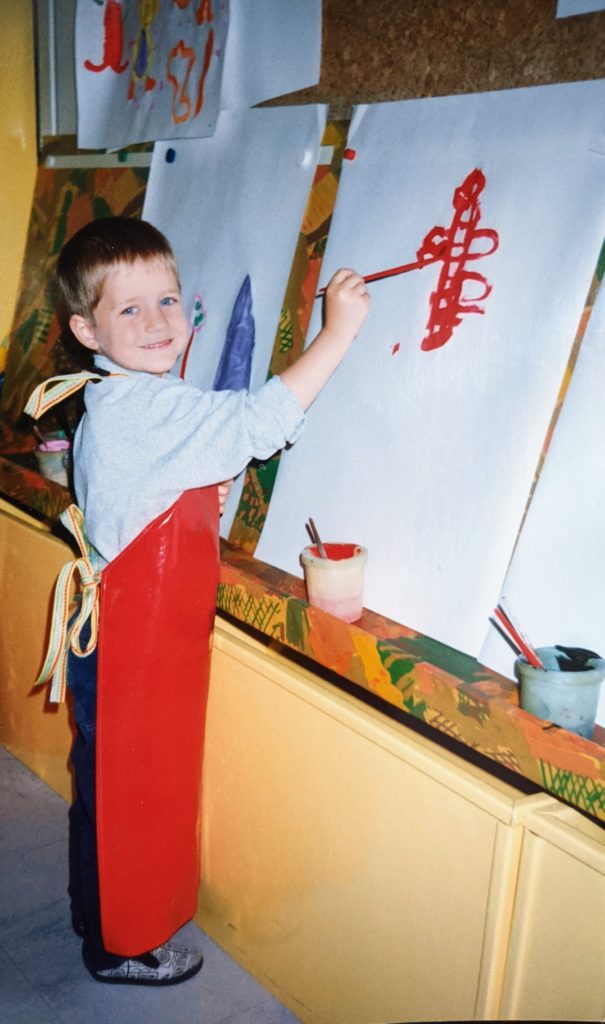
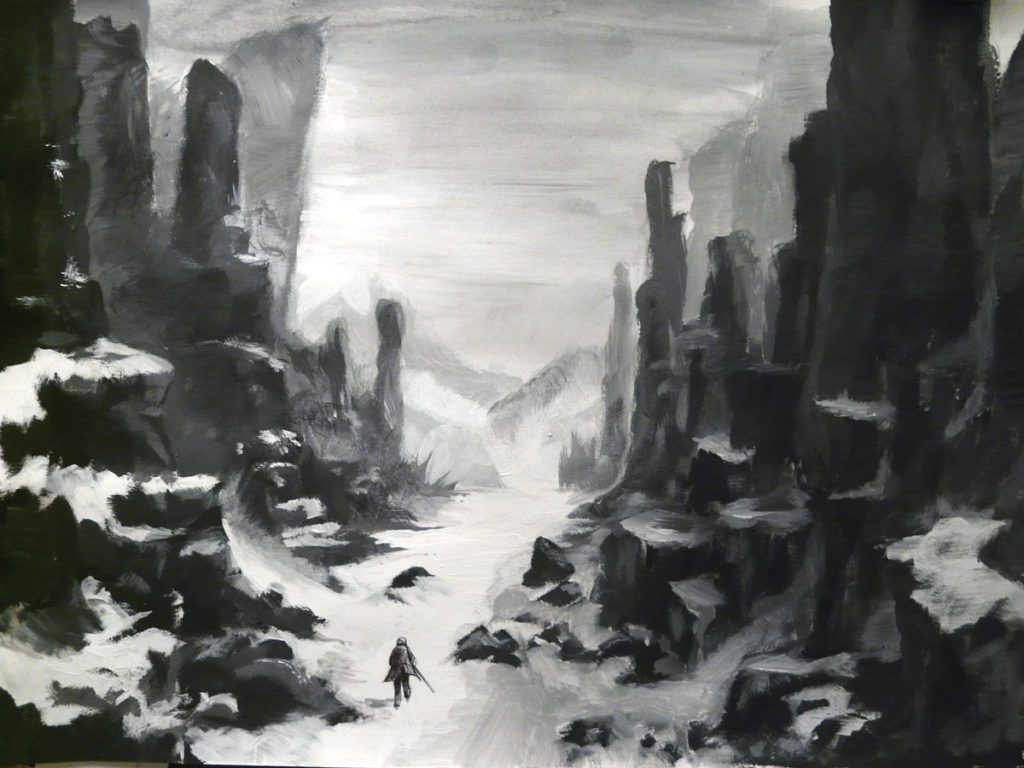
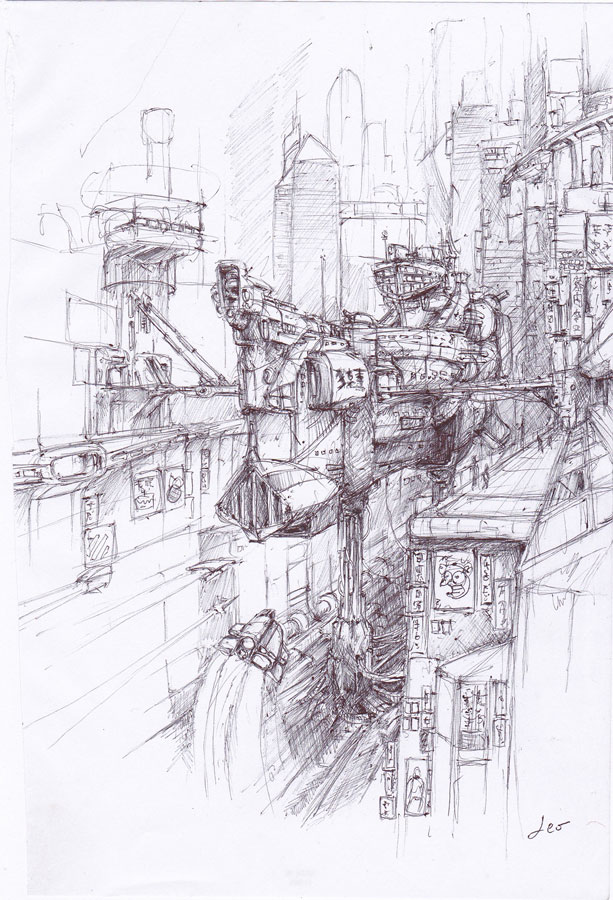
ANTON: And was your family supportive, would you say?
LÉONARD: Yeah, totally. When they saw that my drawing improved, from butterflies with very tiny wings that looked liked worms…
ANTON: [laughs]
LÉONARD: …to complex machinery, because I was drawing robots, and have a drawing that I have done when I was 15 of a robotic hand, fully articulated… but with some perspective problems, etc. But when they saw I was really getting better and better at it, they actually were so supportive that they hired a teacher for me. Because we didn’t have art schools where I was — I was kind of in the countryside — and yeah, I was so lucky to have a teacher that was here for me, who came once/twice a month to teach me. And everything she taught me back then are stuff I’m still using today. So yeah… really supportive!
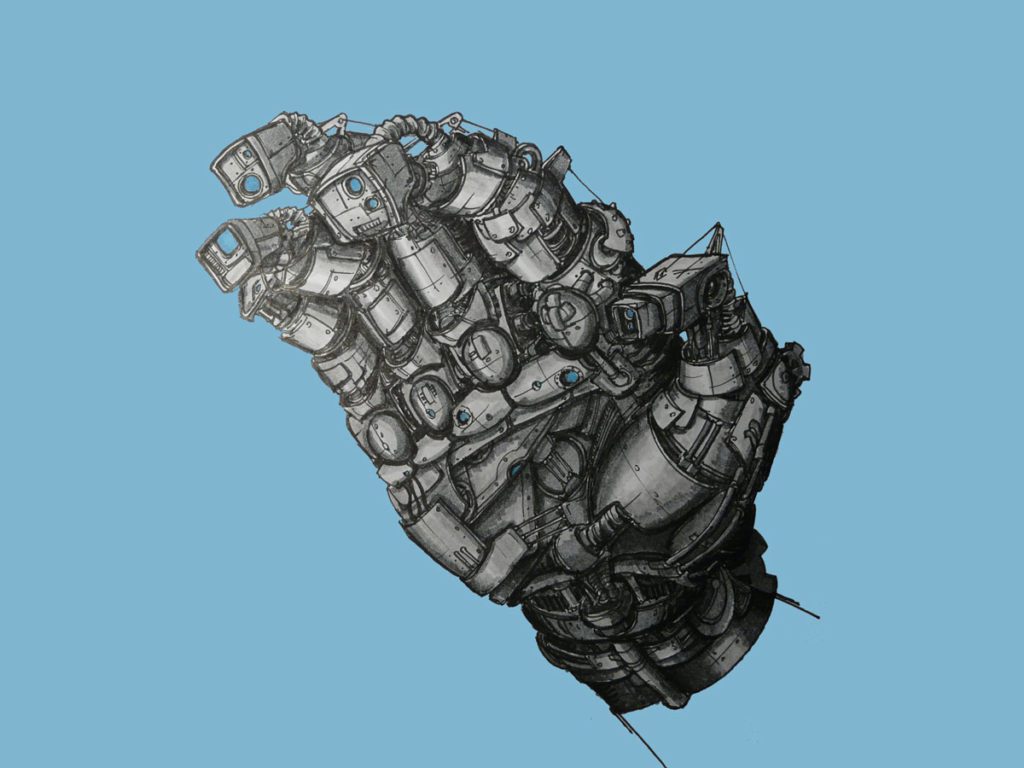
ANTON: And did you end up going to any kind of professional school for your art?
LÉONARD: Indeed! But it wasn’t an easy path, because I wasn’t really mature back then. I knew I wanted to do drawing, but I was quite late for applying to school. So I ended up going to the public university in France, and doing sociology. And although I learned a lot about society, I certainly learned more about drawing because I was drawing all the time (instead of taking notes).
I was even more motivated to get into an art school after this year of sociology. And then I applied to a lot of public schools, got a lot of opportunities to go 2nd step — you know, first they select you on your portfolio, and then you have sort of a meeting with the teachers. So I always went 2nd step meeting with the teachers, but I didn’t get any public art school. And that was a huge bummer for me. And one of the core motivations to succeed with drawing was that it wasn’t an easy start. But my family, as I said earlier, was so supportive, that they accepted that I go to a private art school, and it’s called école de condé Paris. I went there, and I was really really motivated to prove to my parents that I wasn’t there… like random.
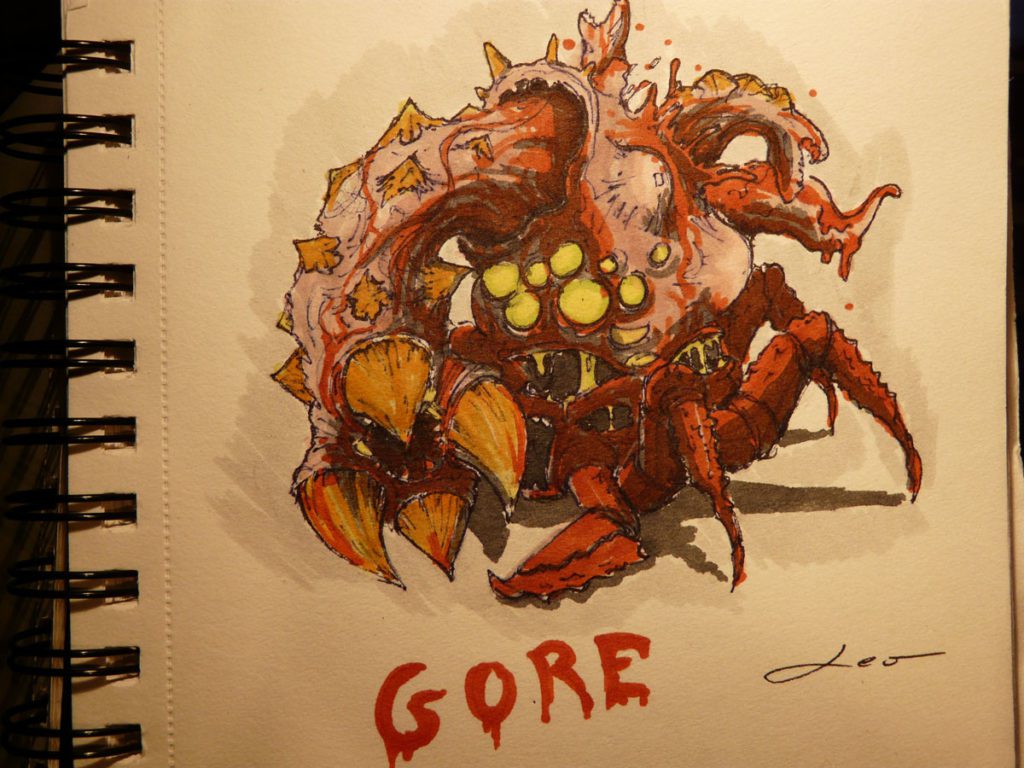
ANTON: What would you say was the most important thing you learned from going to that school?
LÉONARD: Most important thing would be to trust your tastes. To find your own style. Cultivate what makes you unique. It’s what I always say. It’s the hardest thing for people that draw, or create — you always hear “you need to find your own style.” It’s normal, that when you’re young, you don’t have your own. It’s like you’re an empty shell, and you need to get this shell full of culture/references/etc. So don’t blame yourself for not finding your style immediately, because you need to learn a lot and get this shell full of experiences/references.
We would have a lot of technical exercises, but we wouldn’t have much exercises to find what makes you unique, and once you find stuff that really pleases you — like when you start drawing, and you know “this is the way” — you need to cultivate that. So that was one of the key points that I learned.
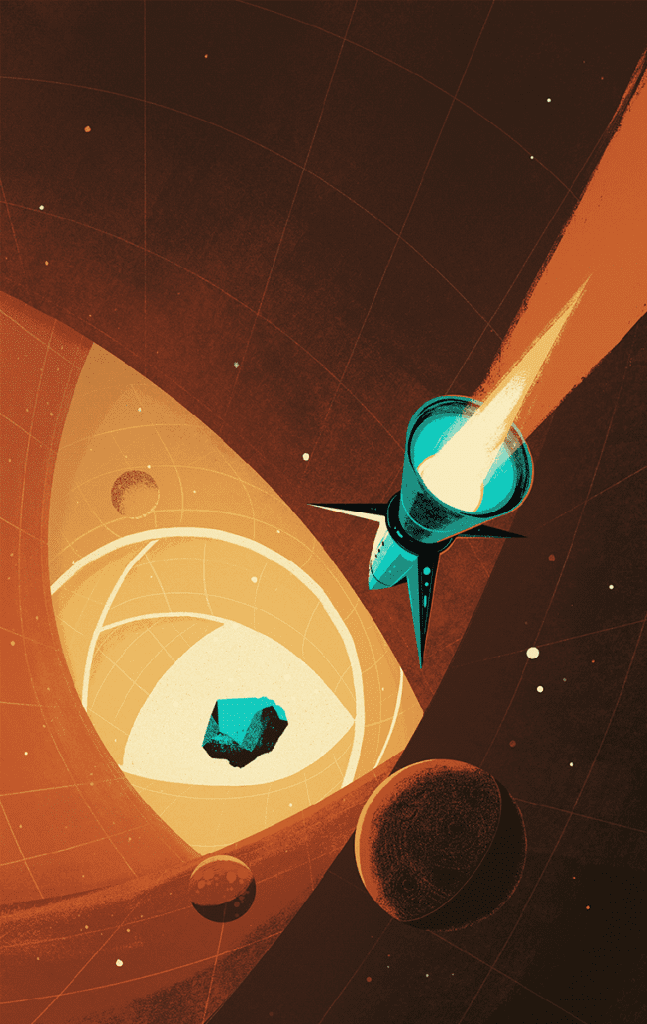
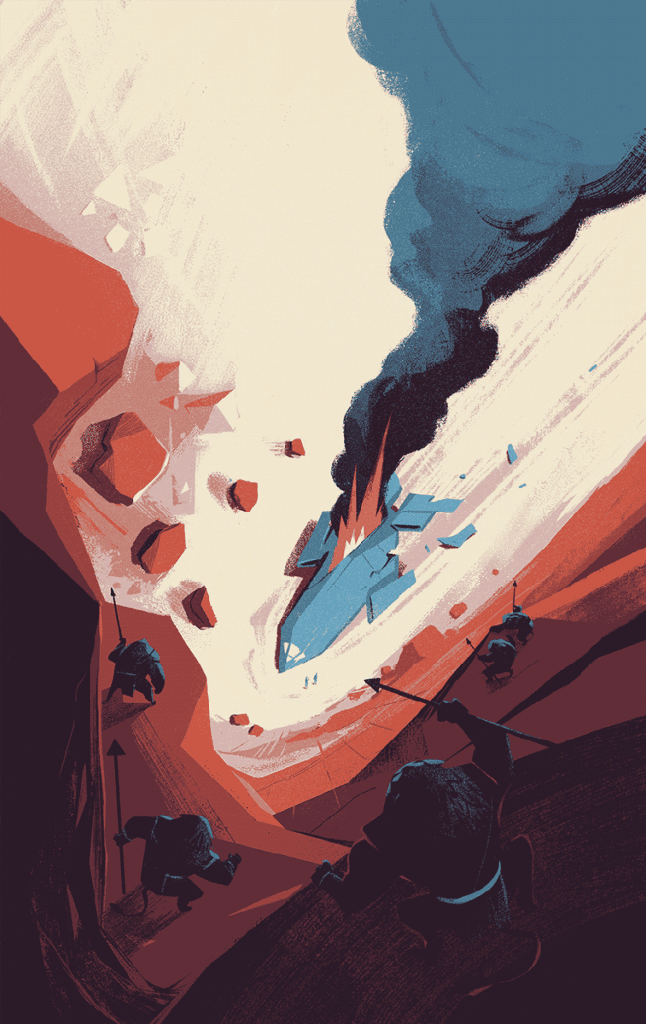
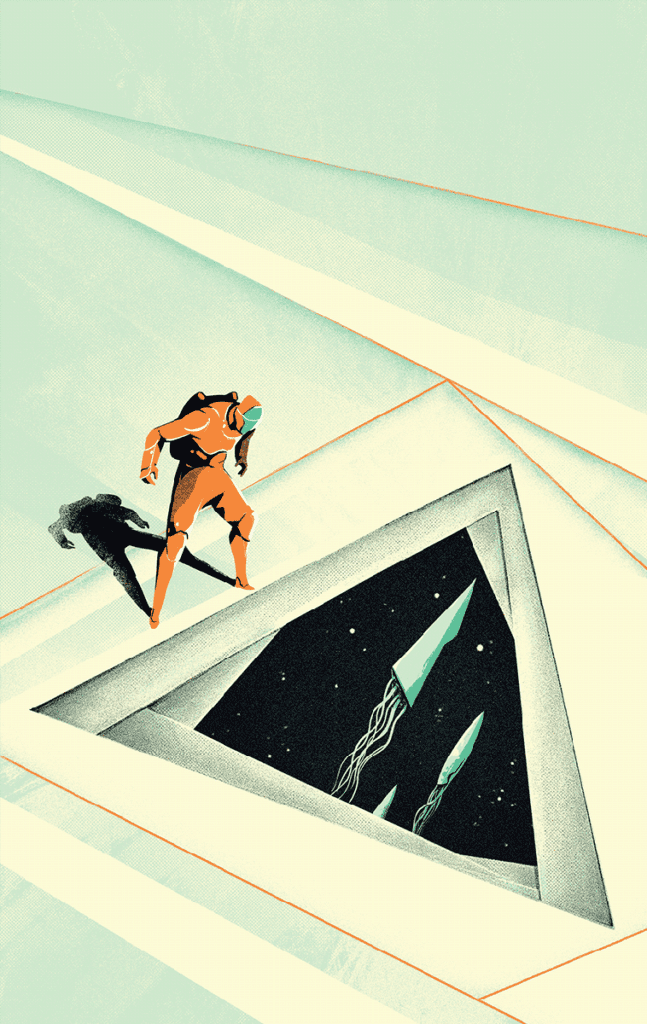
A trio of sci-fi book covers!
ANTON: Can you give us a little overview of your work method? Like for example, when you’re asked to do something like a book cover — how long is the typical process for you from concept to final art?
LÉONARD: Yeah sure!I would say it depends of course upon the complexity of the subject, but I would say it would be between 3 and 4 days. Mostly 3. I tend to take more time when my schedule is free of course. So if the deadline is pressuring me, I tend to do it in 2 or 3 days. Basically, the first sketch — doing it the first day, or even in the morning. So I’m reading the brief of the book, making my first doodles, then making a bigger sketch. Then I would scan the sketch, and then bring it to Photoshop and start to do a black and white sketch with more elements. And then, if I have time, and the cover is… for example I have a cover where you have something on fire with smoke, etc. If I need a texture, then I print the sketch and do the texture — or almost the full drawing — with ink. It depends… like watery techniques with watercolor, or mostly black and whites. And then I scan this again back in Photoshop. And then I do a technique that I learned myself at school: which is to color textures by putting some color — people who create on Photoshop will understand — a layer of color beneath the drawing, and a layer of color above the drawing with a clipping mask. This is basically my process for most of my drawings, which is to have real textures, and then color them with my computer.
ANTON: Wow, that’s a lot!
LÉONARD: Yes.
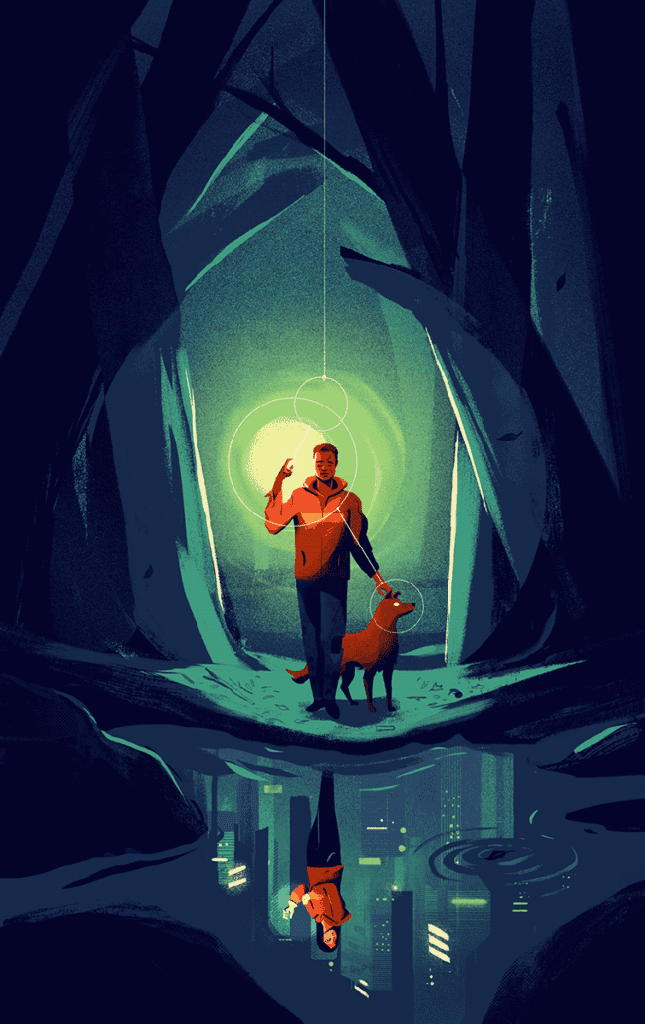
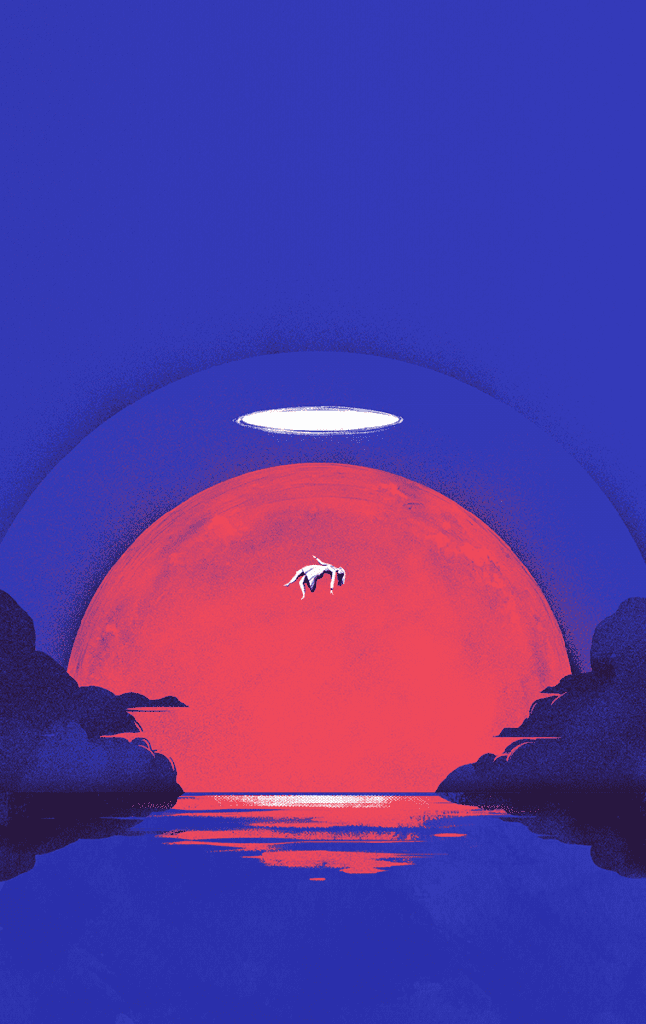
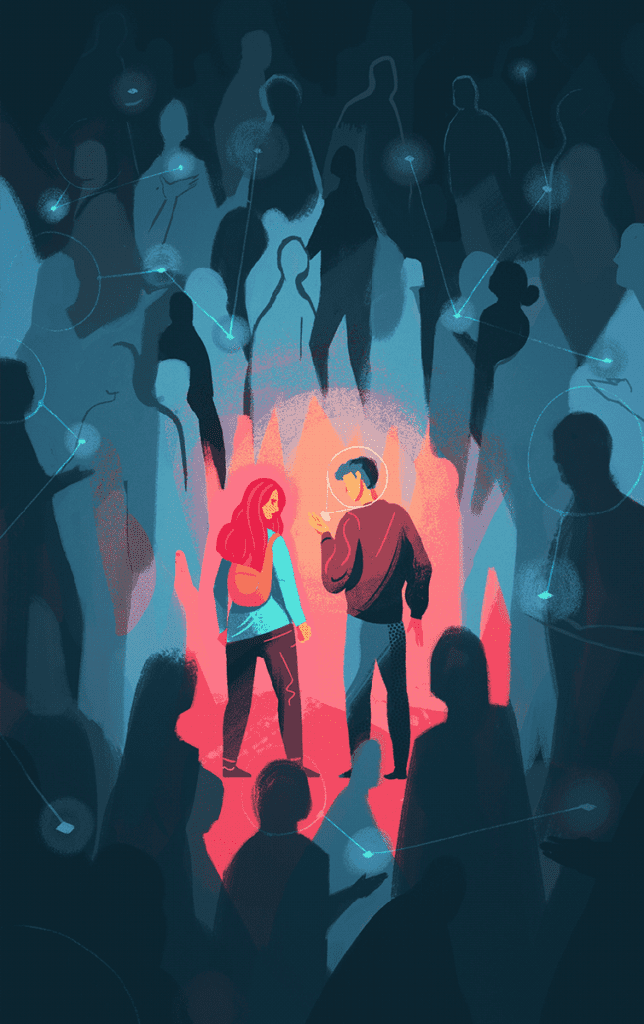
More book covers!
ANTON: Um, this may sound like a silly question, but is there a particular time of day you like to illustrate? Or is there something that gets you in the mood to draw, like music or something like that?
LÉONARD: I guess I see what you mean.I see this on Instagram all the time. People with the beautiful daylight coming in. There’s a coffee…smoking… [laughs]
But no… the best time of the day is when I’m at my shared office with my colleagues, and I’m not too pressured. I have a bit of mind-space to think and have ideas, etc. But it’s mostly… NOT mornings. Because unlike a lot of illustrators, I’m not… how you say… an “early bird.”
ANTON: [laughs] Me neither.
LÉONARD: So I guess it would be… end of the morning. Not any time of day.
ANTON: What was your very first piece of art that was professionally published somewhere?
LÉONARD: It was actually an entire book for kids. I can not pick up on just the one image. It was about 50!!
ANTON: Wow!
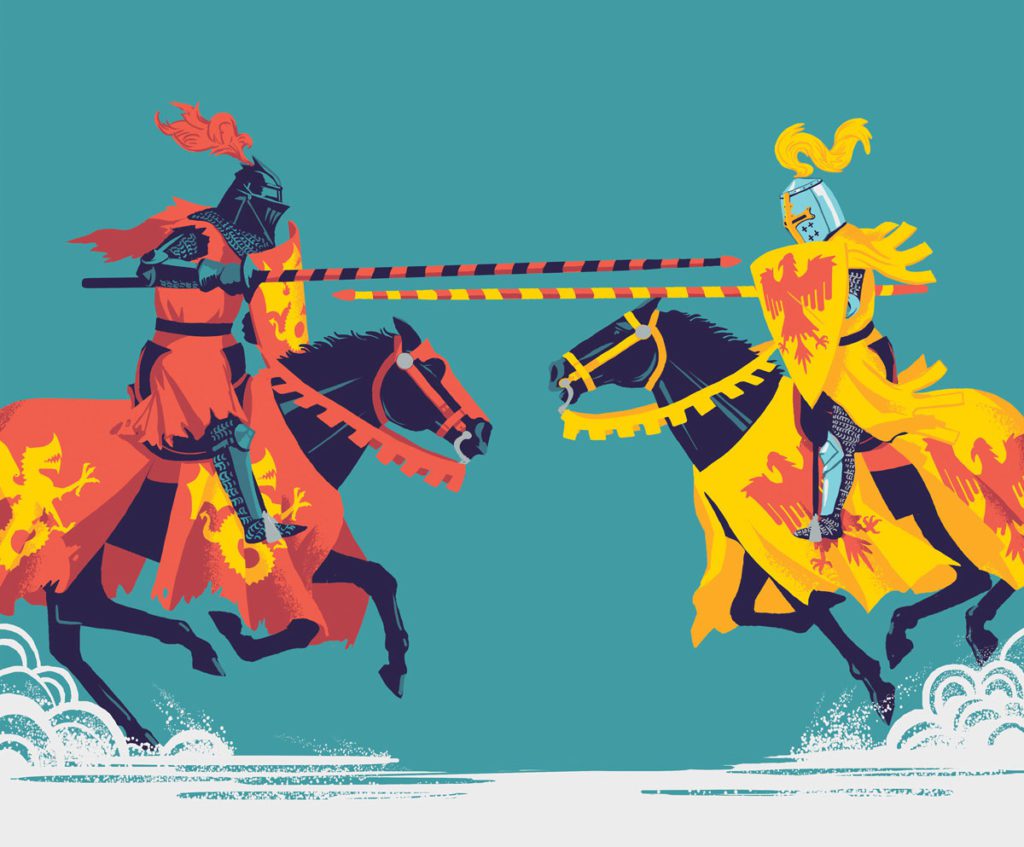
LÉONARD: Basically it was my last year at school. And I started to publish some pictures on Behance, the social platform from Adobe. So I started to post stuff there. And I posted an image that caught the eye of an artistic director of les éditions du Seuil, which is a publisher in France. And he told me “I love this image. Would you like to do an entire book about knights and history?” And since it was my holy grail — I was training and working and learning just for that, to become an illustrator — so of course I dropped every project I had back then and said “of course I want to do it!”
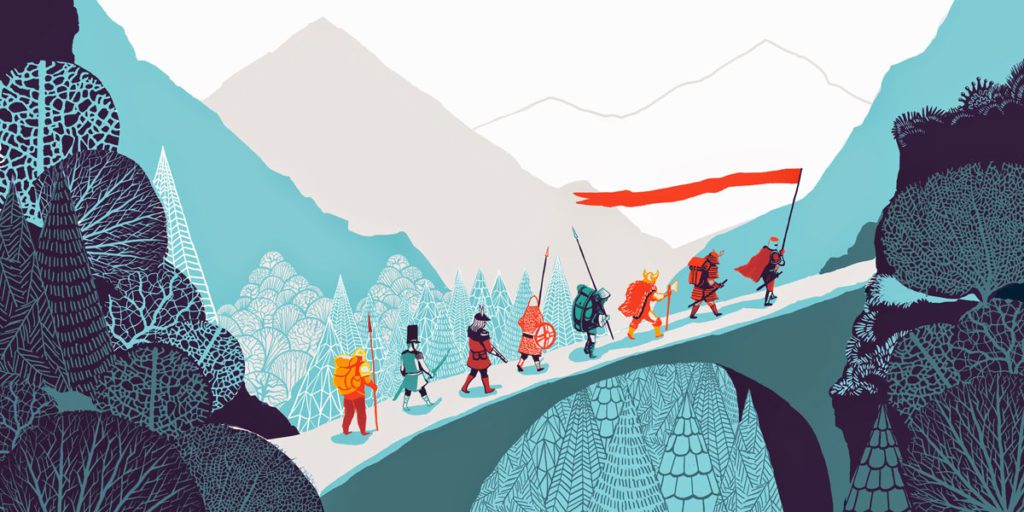
It was really not well paid, but you know…. it was my first job, It was amazing to do it while still at school. And yeah, I learned a lot. It was great! You can see it on my Behance: It’s called The Knight’s game-book.
ANTON: Fantastic. And how do you feel about that book today?
LÉONARD: Today! You know…. I still really like the cover. But I look at it and find it so crude. There’s no detail at all. And it’s a mixed feeling, because it’s mixture of… ok — it’s really smart, because I made just enough detail for the format. For example — we will talk about it — but for I C E, I put an insane amount of detail compared to the size it will be printed. But back then, I put just enough, you know? And now I’m shocked. I feel like there isn’t enough details. But maybe it was smart!
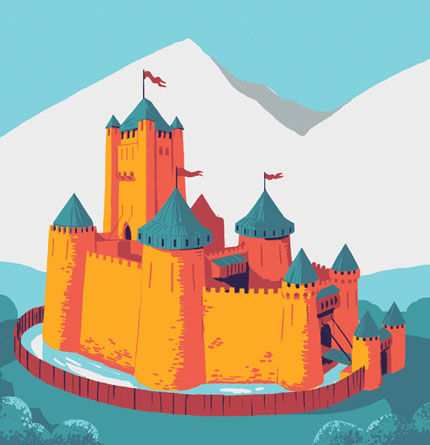
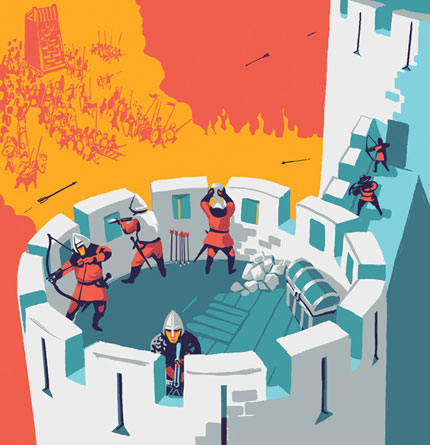
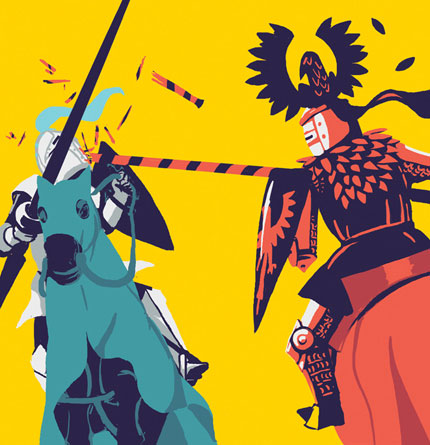
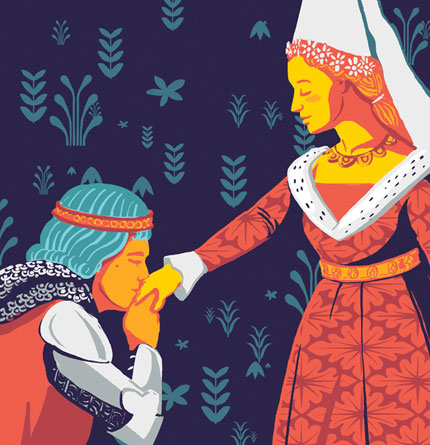
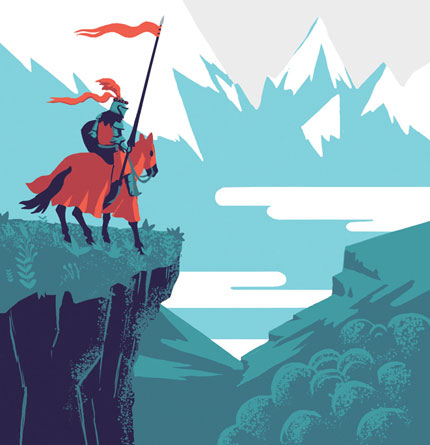
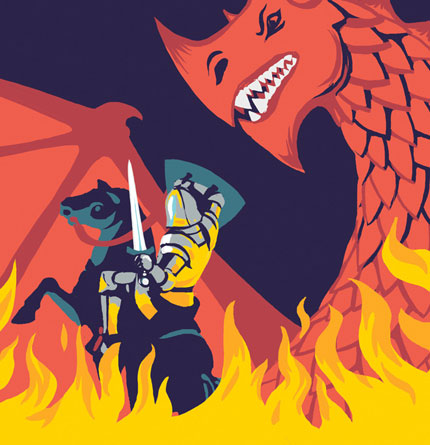
ANTON: [laughs] So we know the first piece. What would you say is the image that gave you the MOST impact in your career trajectory, and why?
LÉONARD: Ok, this is actually the perfect question for me. Because I have a really funny anecdote with this.
ANTON: Ohhhh, fantastic!
LÉONARD: Like the first book came out, and then I’ve done a little video game development, and then I’ve done another book, which is called “The 40 Dates of French History.”
And the last date is, sadly, the 13th of November, 2015 — which is the terrorist attack in Paris. And I have done for this, an image, which represented the Place de la République — this square — where you have a statue of the French republic. And I had drawn the whole crowd around the statute with tiny lights, and it was a kind of a pointillist [image] — the crowd was treated as points of color. And this image… I guess there was something special about it, because I was myself back then there to commemorate, and I really wanted to do something special with it. And it caught the eye of a very big publicity advertising agency which is called Publicis. And they told me — I was in my room in the countryside, still at my parents — they said “Oh, it’s great. We want to use this image for the Prime Minister of France, for his greeting card.”
ANTON: Oh my god!
LÉONARD: So….all of the sudden — I’m doing a tiny book for kids, it’s great, already huge — but all of a sudden it’s a new dimension… it’s politics! I said “Ok!” — because it was first big job! And this is how I found my agent, because I called Michel Lagarde, who came back then to my school, and I tell him “ok, I have this huge job with the publicist for the Prime Minister’s greeting card.” And he said “ok, I’m going to represent you on this one.” So this is how I got my agent.
And then the funny story is not that. It’s that a couple of weeks later, my cousin sends me an article of Le Canard enchaîné, which is a satirical newspaper, and there’s an article about this greeting card! And it is written: “36,000 euros for a greeting card.” So I didn’t get this amount of money. I had like 1,500…
Turns out that the Prism Minister back then had launched 60 projects, and just took one — mine — and this satirical newspaper made an article where they described my image like having “shitty confettis” with the crowd…
ANTON: [laughs] What?
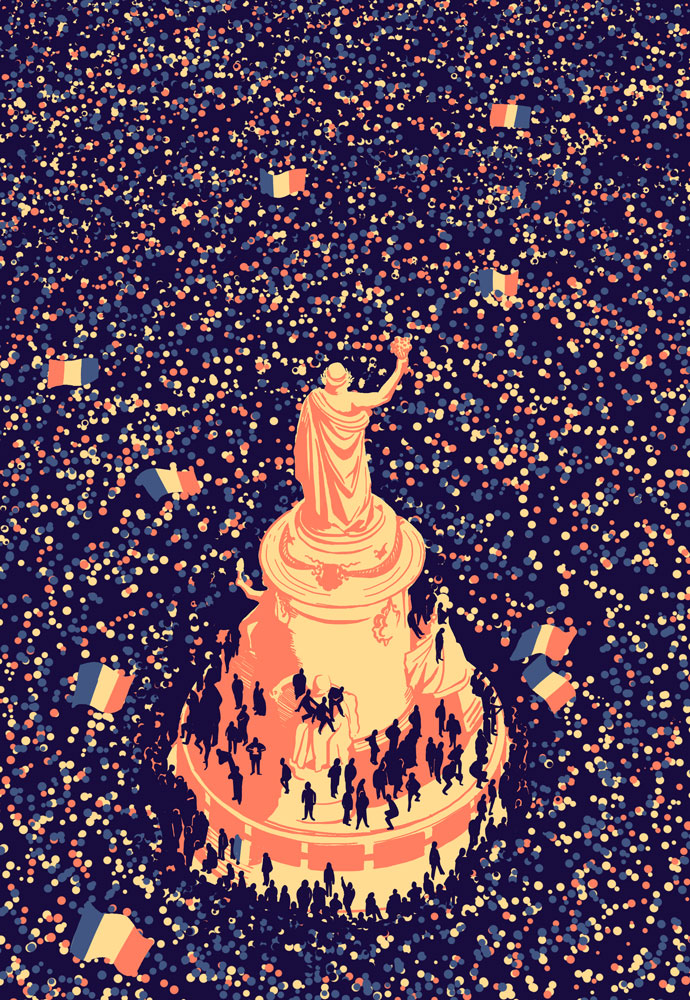
LÉONARD: …because, like I said, I treated them with dots. So they said “all of this [money], for shitty confettis.” And I thought “Ok, being an illustrator is more than being in your room. It’s show business, actually!”
ANTON: Yeah…wow! [laughs]
LÉONARD: But it launched my professional career with my agents, and the “big guns.”
ANTON: Wow, that’s fantastic.
Well… that’s all the time we have for today. Thank you so much for answering these questions about your early life and career. And Explorers…. we’re going to be back next week for Part Two, where we’ll finally talk to Léonard about his involvement with ICE, and… what comes next! Stay tuned explorers. Bye for now.
